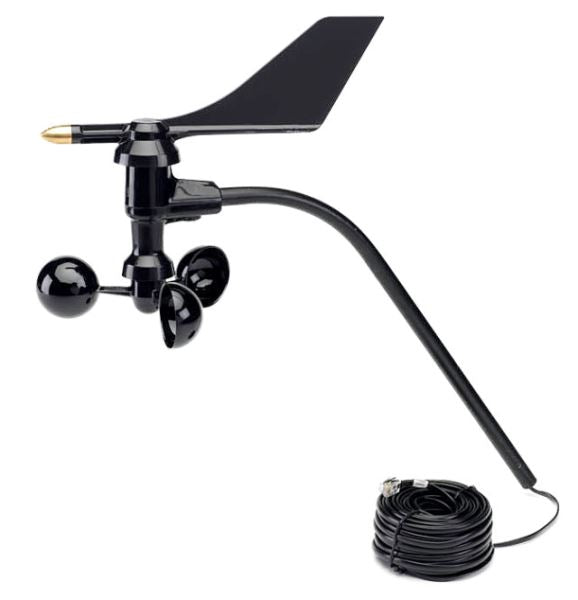How to Keep and Care for Your Anemometer to Guarantee Durability
How to Keep and Care for Your Anemometer to Guarantee Durability
Blog Article
Discovering the Features and Advantages of Anemometers for Climate Fanatics and Specialists
From cup anemometers to sonic anemometers, each kind brings its one-of-a-kind collection of benefits and applications, losing light on various aspects of atmospheric conditions. As we dive right into the features and advantages of anemometers, a deeper understanding emerges not just of prevailing weather condition phenomena yet also of the broader effects for industries like wind energy production and environmental research.
Significance of Anemometers in Climate Monitoring
Anemometers play a critical function in weather monitoring by supplying exact dimensions of wind rate, helping in forecasting and understanding climate patterns. These tools, varying from traditional cup anemometers to contemporary ultrasonic anemometers, are crucial for meteorologists, scientists, and climate enthusiasts alike.

Types of Anemometers and Their Applications
With the crucial duty anemometers play in climate monitoring and projecting, comprehending the different kinds of these instruments and their applications becomes essential for specialists and lovers in the area. The most common kinds of anemometers include cup anemometers, vane anemometers, hot-wire anemometers, and ultrasonic anemometers. Mug anemometers include 3 or 4 mugs placed on straight arms that revolve with the wind, measuring its rate. Vane anemometers, on the other hand, utilize a freely revolving vane to straighten with the wind direction, giving both wind speed and instructions dimensions. Hot-wire anemometers run based upon the concept of convective warmth transfer, where the cooling effect of the air circulation is determined to establish wind rate. Ultrasonic anemometers use ultrasonic acoustic wave to calculate wind speed and instructions properly.
Each kind of anemometer has its special benefits and applications. Mug anemometers are ideal and robust for basic weather monitoring, while vane anemometers are favored for directional dimensions. Hot-wire anemometers are sensitive to reduced air rates, making them ideal for indoor atmospheres. Ultrasonic anemometers are non-intrusive and use high precision, usually used in research and specialized weather condition tracking applications. Recognizing the characteristics and applications of each type of anemometer is critical for picking the most proper tool for particular weather condition monitoring needs.
Benefits of Utilizing Anemometers in Forecasting
In meteorology, the use of anemometers offers very useful advantages for improving the accuracy of weather projecting. Anemometers measure wind rate and direction, providing important information for forecasting climate patterns. By including wind information right into projecting models, meteorologists can better recognize the activity of weather systems, prepare for adjustments in weather, and problem a lot more accurate projections.
Moreover, anemometers play an essential role in evaluating possible weather condition dangers. Monitoring wind speeds assists forecasters predict serious weather events such as typhoons, tornadoes, and winter months tornados with higher precision. This early warning system allows authorities to release prompt informs and carry out necessary precaution, decreasing the risks to life and residential property.
Additionally, anemometers help in enhancing renewable resource production. By analyzing wind patterns, meteorologists can determine ideal places for wind farms and predict energy output, adding to the reliable generation of wind power.

Anemometers in Wind Energy Production
Offered the critical role anemometers play in supplying accurate wind data for weather condition forecasting and threat assessment, their importance prolongs to the world of wind energy manufacturing. Anemometers are necessary tools in the field of wind power, where the dimension of wind rate and instructions is crucial for establishing the expediency and effectiveness of wind turbine setups. By properly measuring wind rates at varying heights, anemometers help enhance the placement and design of wind turbines to optimize energy outcome.
In wind farms, anemometers are purposefully placed to accumulate real-time wind data that is utilized to assess the prospective energy manufacturing of a site. This data is important in identifying the economic stability of wind power projects and in forecasting power generation to guarantee grid security. Furthermore, anemometers aid in checking wind problems to enhance generator efficiency, prevent damages from high winds, and make certain the security of workers working in the area of wind generators.
Enhancing Weather Comprehending With Anemometers

Anemometers play an essential duty in enhancing our understanding of microclimates. These localized weather conditions can differ dramatically from broader regional projections, making it vital to have precise data for details locations. anemometer. By tactically positioning anemometers in different places, researchers can collect comprehensive details on just how wind acts in different terrains, urban environments, or bodies of water
Furthermore, anemometers add to boosting weather forecasting models by supplying real-time information on wind habits. This info is especially valuable for forecasting severe climate occasions, enhancing agricultural practices, and supporting sectors like air travel and maritime navigation. Generally, anemometers are vital instruments that allow us to dive deeper right into the intricacies of weather condition systems, inevitably causing more better-informed choices and accurate predictions.
Conclusion
In final thought, anemometers play an important duty in weather surveillance and forecasting by determining wind rate and direction. Anemometers also have applications in wind energy manufacturing, more highlighting their importance in both weather forecasting and eco-friendly power markets.
From cup anemometers to sonic anemometers, each type brings its unique set of applications and advantages, dropping light on numerous aspects of atmospheric problems. These tools, ranging from conventional cup anemometers to modern-day ultrasonic anemometers, are essential for meteorologists, researchers, and weather condition fanatics alike. The most typical types of anemometers include mug anemometers, vane anemometers, hot-wire anemometers, and ultrasonic anemometers. Cup published here anemometers are durable and ideal this page for general climate tracking, while vane anemometers are preferred for directional dimensions. Anemometers are necessary instruments in the area of wind energy, where the measurement of wind rate and direction is critical for determining the usefulness and performance of wind generator installations.
Report this page